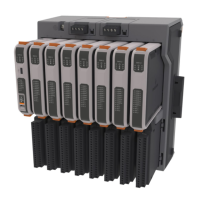Site Considerations for Equipment Installation, Grounding, and Wiring Manual
D301452X012
October 2019
20 Lightning Arresters and Surge Protectors
protection considerations listed below for units installed in areas with a high possibility or
history of stroke activity.
Units interfaced to a modem: In series with the phone line (as far away as possible from the
equipment) - for indoor installations the lightning arrester should typically be located at the
point where the line enters the structure.
Units interfaced to a radio: Mount antenna discharge unit (lightning arrester) as close as
possible to where the lead in wire enters the structure. See Antenna Caution below.
4.1.2 Antenna Caution
Each year hundreds of people are killed, mutilated, or receive severe permanent injuries when
attempting to install or remove an antenna or antenna lead. In many cases, the victim was aware of
the danger of electrocution but failed to take adequate steps to avoid the hazard. For your safety,
and for proper installation maintenance, please read and follow the safety precautions that follow -
they may save your life.
▪
When installing or servicing an antenna:
o
DO NOT use a metal ladder. DO NOT step onto or touch an antenna mast while power is
applied to an associated radio unless the radio is a low power (low current) type.
o
DO NOT work on a wet or windy day, especially during a thunderstorm or when there is
lightning or thunder in your area. Dress properly; shoes with rubber soles and heels, rubber
gloves, long sleeve shirt or jacket.
▪
The safe distance from power lines should be at least twice the height of the antenna and mast
combination.
▪
Antenna Grounding per National Electrical Code Instructions:
A.
Use AWG 10 or 8 aluminum or AWG 1 copper-clad steel or bronze wire, or larger as ground
wires for both the mast and lead-in. Be mindful of dissimilar metals resulting in a corrosion
problem. Securely clamp the wire to the bottom of the mast.
B.
Secure lead-in wire from antenna to antenna discharge (lightning arrester) unit and the
mast ground wire to the structure (building, shed, etc.) with stand-off insulators spaced
from 4 feet (1.22 meters) to 6 feet (1.83 meters) apart.
C.
Mount antenna discharge unit as close as possible to where the lead-in wire enters the
structure.
D.
The hole drilled through the wall for the lead-in wire should be just large enough to
accommodate the cable. Before drilling this hole, make sure there are no wires or pipes,
etc. in the wall.
E.
Push the cable through the hole and form a rain drip loop close to where the wire enters
the exterior of the structure.
F.
Caulk around the lead-in wire (where it enters the structure) to keep out drafts.
G.
Install lightning arresters (antenna discharge units). The grounding conductor should be
run in as straight a line as practicable from the antenna mast and/or the antenna discharge
units to grounding electrode(s).

